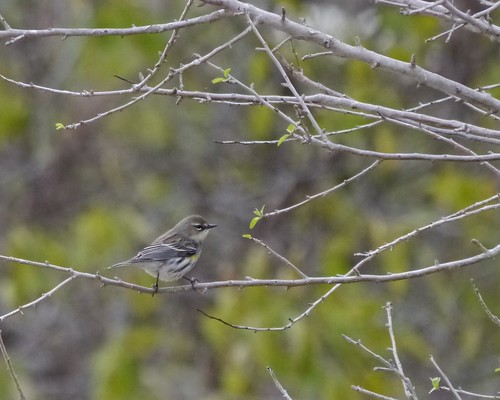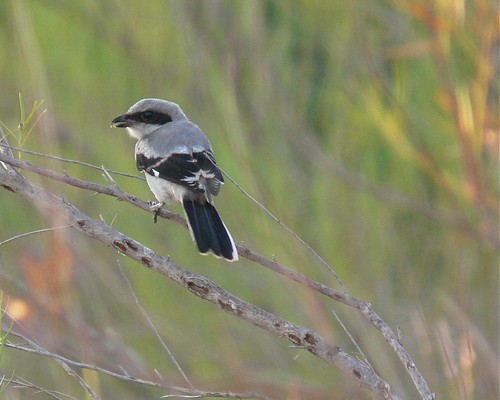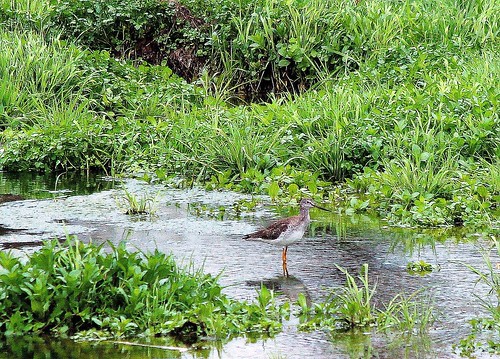I was pleasantly surprised that despite the weather, 13 people participated in the NASWC Bird Walk this morning. We started in light rain at about 8:00 AM in the parking lot at the end of Braes Valley. The temperature stayed in the 40s and there was a cold north wind blowing most of the time. But we still managed to find 36 species of birds in two hours and have fun while doing it. Here are some highlights.
Near the parking lot we watched 5 or 6 Yellow-rumped Warblers in the willow trees beside the trail. These are one of our few species of winter-resident warblers, and they are usually one of the most common birds by the creek this time of year. Here's a photo of one I took last December.
Between the parking lot and the footbridge we also found a Ruby-crowned Kinglet, Northern Cardinals, Carolina Wrens, and a few of us got brief looks at a Spotted Towhee. This stretch of trail was also a good place to hear the difference between the chip notes made by Northern Cardinals and Yellow-rumped Warblers. (Sound can be just as important as sight to bird identification and observation.)
Things were kind of quiet and slow at the footbridge, so we kept walking downstream to try our luck in the more open habitat along the creek bed in the Town and Country Optimist Club playing fields. We got great looks at a single Loggerhead Shrike that flew in pretty close. These small predators are a striking combination of black, grey, and white. Here's a photo of one I took last summer. Look at that heavy, hooked bill!
A little further downstream we stopped to examine a large flock of Great-tailed Grackles and European Starlings that were foraging on the ground in the creek bed and on both banks. Closer inspection yield a few Red-winged Blackbirds and Brown-headed Cowbirds mixed in. While scanning these birds we realized that a small patch of deeper water between them had a small group of wild ducks on it. There were 8-10 Green-winged Teal and a single male Blue-winged Teal. We had to settle for relatively distant looks at these beautiful wild ducks since they flush very easily. Nearer to us and also in the creek bed we found a single Greater Yellowlegs and a single American Pipit. Sukumar Veena got these photos of both. Here's the Greater Yellowlegs, a winter-resident shorebird on our creek. It can be distinguished from the very similar Lesser Yellowlegs by its slightly longer and barely upturned bill.
And here's Sukumar's photo of the American Pipit. It's a small sparrow-like songbird that is usually associated with water. It's another winter resident of our creek.
At one point the flock of blackbirds and starlings suddenly flushed, and I looked up to see a falcon flying overhead. It didn't stop, so only a few of us got brief looks at it flying over. My best guess is that it was a Merlin but I wasn't sure.
Here's our complete species list. I still can't believe so many folks showed up on such a cold and rainy morning!





No comments:
Post a Comment